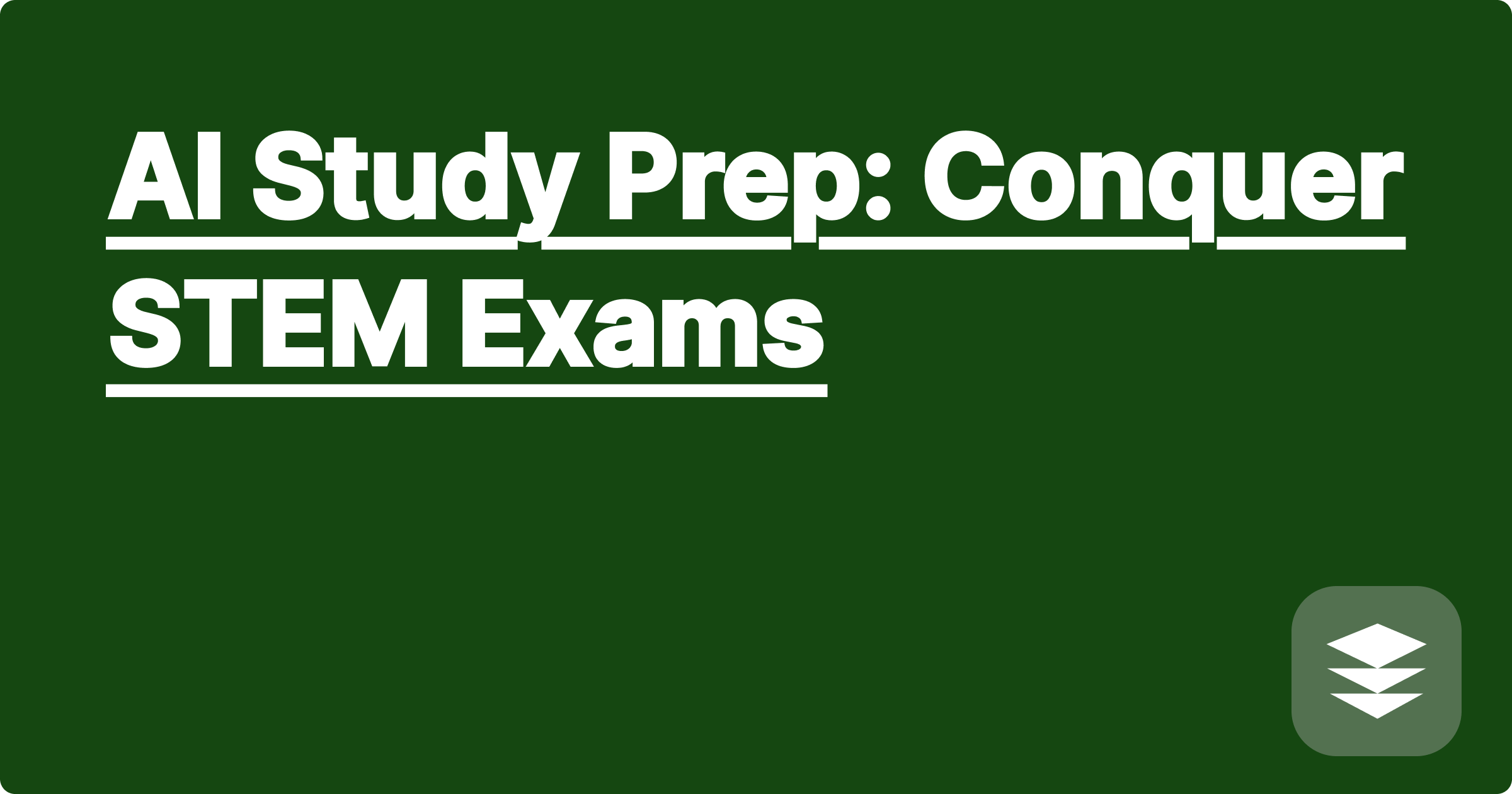
The demanding world of STEM education presents unique challenges. Long nights in the lab, complex problem sets, and the constant pressure to excel can feel overwhelming. But what if you could harness the power of artificial intelligence to transform your study habits, boost your GPA, and even accelerate your research? This isn't science fiction; it's the reality of AI-powered study prep. This blog post will explore how you can leverage cutting-edge AI tools to conquer your STEM exams and unlock your full academic potential. We'll delve into practical strategies, real-world examples, and even touch on maintaining your well-being throughout the demanding academic journey.
For STEM students and researchers, effective time management and personalized learning are crucial for success. Traditional study methods often fall short in addressing individual learning needs and optimizing study time. That's where AI comes in. AI-powered learning platforms offer a revolutionary approach to studying, providing personalized study plans, intelligent feedback, and efficient resource management. This empowers you to not just survive, but thrive in your STEM field.
STEM fields are inherently complex, requiring a deep understanding of fundamental concepts and the ability to apply them to intricate problems. Students often struggle with vast amounts of information, intricate formulas, and abstract theories. Traditional study methods, like rote memorization and passive reading, are often inefficient and can lead to superficial understanding. Furthermore, juggling multiple courses, research projects, and extracurricular activities demands effective time management, a skill many students find challenging to master. This can result in increased stress, burnout, and ultimately, a negative impact on academic performance. The lack of personalized feedback and guidance can also hinder progress, leaving students feeling lost and demotivated.
Imagine having a personalized tutor available 24/7, capable of analyzing your strengths and weaknesses, creating customized study plans, and providing targeted feedback. This is the power of AI in education. Platforms like the hypothetical GPAI, as well as existing tools like Khan Academy, Wolfram Alpha, and even ChatGPT, can revolutionize your study habits. GPAI, for example, can generate personalized learning plans based on your course syllabus and learning style. It can identify areas where you need more practice and provide targeted exercises and resources. Wolfram Alpha can help you understand complex mathematical concepts and solve intricate equations. ChatGPT can assist with research, brainstorming ideas, and even generating practice questions. By integrating these AI tools into your workflow, you can transform your study approach from passive to active, significantly enhancing your understanding and retention of complex STEM concepts.
Let's walk through a practical example using GPAI. First, input your course syllabus and upcoming exam dates. GPAI will then analyze the material and create a personalized study schedule. Next, engage with the platform's interactive learning modules, which incorporate various learning methods like videos, simulations, and practice quizzes. As you progress, GPAI tracks your performance, identifying areas where you excel and where you need more focus. It then adjusts the study plan accordingly, ensuring you spend your time most effectively. You can also integrate GPAI with your calendar and other time management apps to seamlessly incorporate your study schedule into your daily routine.
Consider a physics student struggling with projectile motion. Instead of passively reading textbooks, they can use a physics simulation tool powered by AI, like Algodoo, to visualize different scenarios and manipulate variables in real-time. A chemistry student can leverage AI-powered molecular modeling software to visualize complex molecules and understand their interactions. For a mathematics student grappling with calculus, Wolfram Alpha can provide step-by-step solutions to complex integrals and derivatives, clarifying the underlying concepts. These are just a few examples of how AI can be applied across various STEM disciplines. Imagine a biology student using an AI-powered literature review tool to sift through thousands of research papers and identify the most relevant studies for their project. This saves valuable time and allows for deeper engagement with the chosen material.
Integrating AI into your study routine requires a strategic approach. Start by identifying your specific needs and challenges. Are you struggling with time management, understanding complex concepts, or applying theoretical knowledge to practical problems? Once you've pinpointed your weaknesses, choose the AI tools that best address those areas. Don't be afraid to experiment with different platforms and find what works best for you. Remember that AI is a tool, and its effectiveness depends on how you use it. Combine AI-powered learning with active recall techniques, spaced repetition, and regular review for optimal results. Also, consider incorporating AI-driven time management apps like Sunsama or Todoist, which can help you prioritize tasks, schedule study sessions, and stay on track with your goals. Finally, don't neglect your well-being. Utilize mindfulness apps like Headspace or Calm to manage stress and maintain a healthy work-life balance.
To truly maximize the benefits of AI in your STEM studies, embrace a proactive and experimental mindset. Explore different platforms, integrate AI tools into your existing workflow, and continuously evaluate their effectiveness. Remember that consistent effort, combined with the strategic use of AI, can unlock your full academic potential and pave the way for a successful STEM career. Don’t just survive your STEM journey; thrive in it with the power of AI.
AI Time Manager: Optimize Study
AI Study Prep: Conquer STEM Exams
AI Homework Help: STEM Problem Solver
AI for Physics: Simulations & Models
AI Chem Help: Simulations & Models
Smart Study: AI Time Management
AI Lab Reports: Data Analysis Made Easy